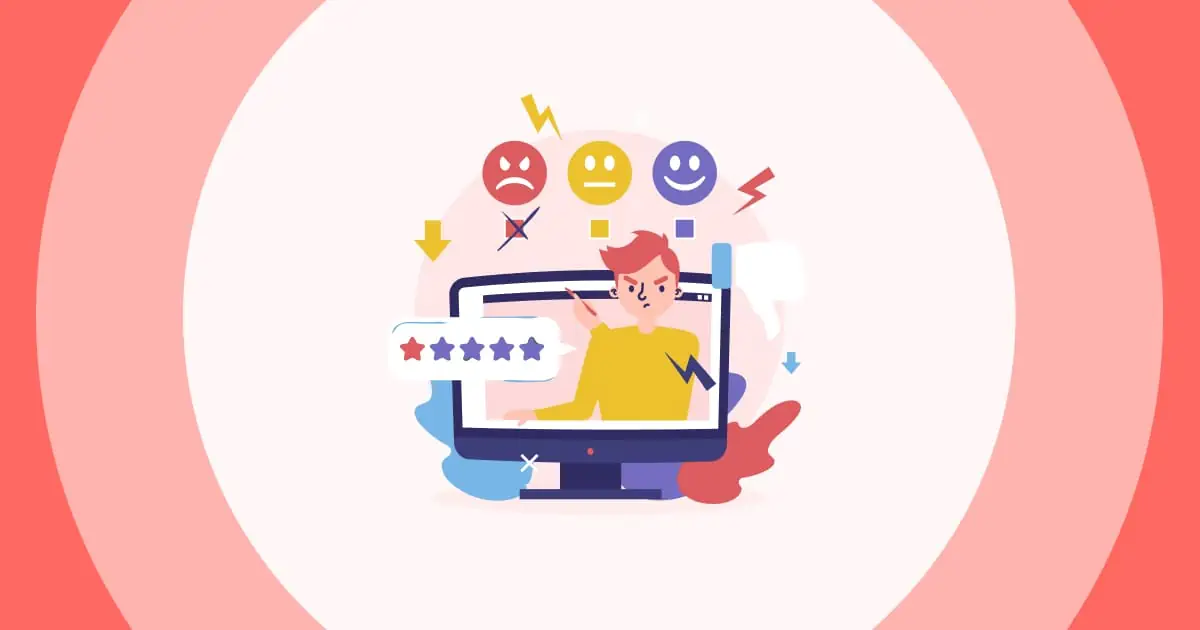직업 세계에서는 정말로 차이를 만들어낼 수 있는 특별한 기술이 있습니다. 피드백을 받고. 성과 평가, 동료의 제안, 심지어 고객의 비판 등 어떤 상황에서든 피드백은 여러분의 잠재력을 깨우는 열쇠입니다.
이 블로그 게시물에서는 직장에서 피드백을 받는 기술을 자세히 살펴보겠습니다. 이 기술은 여러분의 커리어를 변화시키고 역량을 강화할 수 있는 기술입니다. 단순히 피드백을 받는 것뿐만 아니라, 피드백을 활용하여 직장에서 더욱 뛰어난 성과를 낼 수 있는 방법을 알아보겠습니다.
회사 개요
| 피드백을 받기에 가장 좋은 퀴즈 유형은 무엇입니까? | 개방형 질문 |
| 피드백의 다른 말은 무엇일까? | 응답 |
| 고객 설문조사를 만들려면 어떤 유형의 퀴즈를 사용해야 합니까? | MCQ |
차례


동료에 대해 더 잘 알아보세요! 지금 온라인 설문조사를 설정하세요!
AhaSlides의 퀴즈와 게임을 사용하여 재미있고 대화형 설문 조사를 만들고 직장, 수업 또는 소규모 모임에서 대중의 의견을 수집하세요.
🚀 무료 설문조사 만들기☁️
피드백을 받는다는 것은 무엇인가?
피드백을 받는다는 것은 다른 사람이 자신의 성과, 행동 또는 업무에 대한 정보, 의견 또는 평가를 듣고, 받아들이고, 수용하는 방식을 말합니다. 이는 개인의 강점, 단점, 개선할 부분을 보여주기 때문에 개인적, 직업적 발전을 위한 귀중한 도구입니다.
피드백은 상사, 동료, 친구, 심지어 고객까지 다양한 출처에서 나올 수 있습니다. 사람들이 당신의 행동을 어떻게 보는지, 그리고 어떻게 긍정적인 변화를 만들 수 있는지 이해하는 것이 중요합니다.
어떤 사람들은 왜 피드백을 받는 것을 싫어하거나 두려워할까?
피드백을 받는 것에 불편함이나 두려움을 느끼는 것은 지극히 정상적이고 흔한 경험입니다. 이러한 반응의 몇 가지 이유를 살펴보겠습니다.
- 과거의 나쁜 경험. 누군가가 과거에 비판을 받거나 가혹한 판단을 받았다면, 그런 일이 다시 일어날까 봐 두려워할 수도 있습니다.
- 판단받는 것에 대한 두려움. 피드백은 인신공격처럼 느껴질 수 있으며, 상대방이 방어적이거나 부족하다고 느끼게 만들 수 있습니다. 이러한 두려움은 종종 긍정적인 자아상을 유지하고 자존감을 보호하려는 욕구에서 비롯됩니다.
- 취약함을 느낀다. 좋은 것과 별로 좋지 않은 것이 모두 들어 있는 비밀 상자를 여는 것과 같다고 상상해 보세요. 어떤 사람들은 그런 느낌을 좋아하지 않습니다.
- 자신을 믿지 못함. 자존감이 낮은 사람들은 피드백을 두려워할 수 있습니다. 피드백이 자신의 자신감을 확인하는 것으로 여겨지기 때문입니다. 자신이 생각했던 것만큼 유능하지 않다는 사실이 드러나는 것 같아 불안감을 느낄 수도 있습니다.

방어적인 태도를 취하지 않고 피드백을 받는 방법
피드백을 받는 것은 마치 자기 계발을 위한 보물 지도를 얻는 것과 같습니다. 하지만 때로는 방어적인 태도를 느낄 때가 있습니다. 걱정하지 마세요. 여기 가이드가 있습니다.
1/ 정신적 장벽을 극복하세요:
가장 어려운 싸움은 종종 우리 마음속에서 벌어집니다. 따라서 첫 번째 단계는 피드백을 객관적으로 받아들이는 데 필수적인 기반인 성장형 사고방식을 기르는 것입니다. 다음 연습을 통해 이러한 접근 방식을 알아보세요.
- 잠시 멈추고 숨쉬기: 잠시 시간을 내세요. 심호흡은 몸을 시원하게 유지하는 데 도움이 됩니다.
- 먼저 듣기: 무슨 말을 하는지 들어보세요. 중요한 건 당신이 아니라 당신의 행동입니다.
- 계속해서 호기심을 가지세요: 질문하세요. 상대방의 관점을 이해하세요. 마치 퍼즐 조각과 같습니다.
- 즉시 답변 없음: 반격하지 마세요. 반응하기 전에 충분히 생각하세요.
- 별도의 감정: 피드백 ≠ 공격. 성장을 위한 것이지, 판단을 위한 것이 아닙니다.
- 감사하고 성찰하세요: 피드백 감사합니다. 나중에 어떻게 활용할지 생각해 보세요.
2/ 피드백 요청:
성장의 길로 나아가려면 피드백을 구해야 합니다. 그 힘을 활용하기 위해 다음과 같은 과감한 조치를 취하십시오.
- 입력 초대: 주저하지 말고 피드백을 요청하세요. 여러분의 솔직한 의견은 귀중한 통찰력을 불러일으킵니다.
- 적절한 시간 선택: 양측이 건설적인 대화를 나눌 수 있는 적절한 순간을 찾으세요.
- 초점 지정: 대화를 특정 영역으로 이끌어 타겟 피드백을 얻을 수 있습니다.
- 적극적인 듣기 : 주의 깊게 경청하세요. 방해하지 않고 공유된 통찰력을 흡수하세요.
- 명확히 하고 탐구하세요: 필요하다면 명확하게 이해하도록 노력하세요. 관점을 완전히 이해하기 위해 더 깊이 파고드세요.
3/ 반성하세요:
피드백을 되돌아보는 것은 효과적인 피드백을 받는 과정에서 매우 중요한 단계입니다. 피드백을 신중하게 검토하고, 그 타당성과 관련성을 분석한 후, 이를 활용하여 자신의 기술과 성과를 어떻게 향상시킬지 결정하는 시간을 가져야 합니다.

4/ 피드백을 실행으로 전환하세요:
피드백에 맞춰 구체적인 단계를 제시하고, 달성 가능한 목표를 바탕으로 실질적인 개선 전략을 수립하세요. 이러한 적극적인 자세는 개인적, 직업적 성장에 대한 당신의 헌신을 보여줍니다.
피드백을 개선의 도구로 활용하세요. 피드백을 활용하여 기술, 지식, 성과를 강화하고 앞으로 나아가세요.
5/ 감사함을 표현하세요:
피드백의 내용과 관계없이, 피드백을 준 사람에게 감사를 표하세요. 감사를 표하는 것은 그들의 의견을 소중히 여기고 지속적인 개선을 위해 노력한다는 것을 보여줍니다.
다음은 몇 가지 예입니다 :
- 긍정적 인 피드백: "프로젝트에서 제가 얼마나 철저했는지 강조해 주셔서 감사합니다. 당신의 따뜻한 말씀 덕분에 저는 이 정도 수준의 헌신을 계속해 나갈 수 있었습니다."
- 건설적인 비판: "제 프레젠테이션에 대한 당신의 통찰력에 감사드립니다. 당신의 피드백은 제가 프레젠테이션을 더욱 발전시키고 청중과 더 잘 소통하는 데 분명 도움이 될 것입니다."
6/ 자기 연민을 실천하세요:
피드백을 줄 때는 자신에게 친절을 베푸세요. 누구도 완벽할 수 없다는 것을 이해하세요. 우리 모두는 발전합니다. 피드백을 자기 가치 측정 기준이 아닌 성장의 원동력으로 여기고, 자신에게 연민을 베푸세요.

피드백 제공에 대한 심층적인 통찰력을 얻으려면 포괄적인 정보를 살펴보세요. 효과적으로 피드백을 제공하는 방법. 협업과 성장을 강화하는 데 귀중한 의견을 제공하는 기술을 배우세요.
최종 생각
피드백을 받으면 실수에서 배우고 역량을 향상시킬 수 있습니다. 또한 다른 사람들이 우리를 어떻게 생각하는지, 어떻게 더 나은 소통과 협업을 할 수 있는지에 대한 통찰력을 얻을 수도 있습니다.
AhaSlides가 피드백 수신 능력을 향상시킬 수 있는 기회를 제공한다는 점을 잊지 마세요. AhaSlides를 활용하면 대화형 기능, 우리는 역동적인 토론에 참여할 수 있고, 회의에서는 다양한 관점의 의견을 수렴하고, 피드백을 효과적으로 활용하는 능력을 다듬을 수 있습니다!
자주 묻는 질문
피드백을 받는 예는 무엇입니까?
직장에서 프레젠테이션을 방금 마쳤다고 상상해 보세요. 프레젠테이션이 끝난 후 동료가 다가와서 "프레젠테이션 정말 잘했어요! 요점도 명확하고 청중의 참여도 잘 이끌어냈어요. 앞으로도 좋은 발표 부탁드려요!"라고 말합니다.
피드백을 받는 좋은 방법은 무엇인가요?
피드백을 받는 좋은 방법에는 정신적 장벽을 극복하고, 피드백을 요청하고, 목적을 가지고 반성하고, 피드백을 행동으로 옮기고, 감사를 표현하고, 자기 연민을 실천하는 것이 있습니다.
피드백을 받는다는 것은 무엇인가요?
피드백을 받는다는 것은 다른 사람이 자신의 성과, 행동 또는 업무에 대한 정보, 의견 또는 평가를 듣고, 받아들이고, 수용하는 방식을 말합니다.








